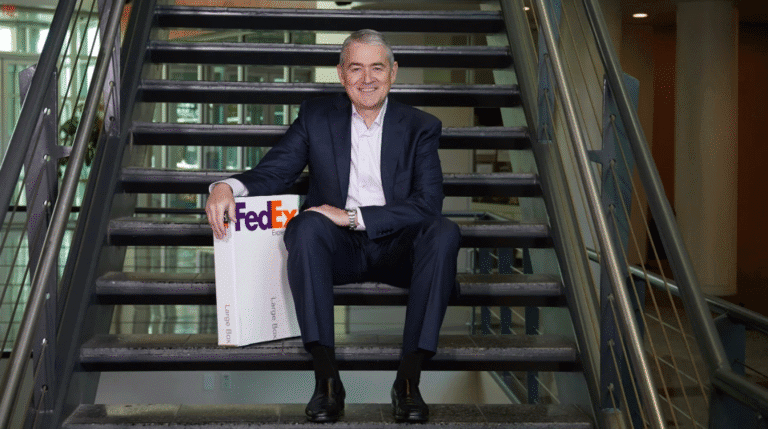As pharmaceutical logistics tighten under the weight of stricter regulation, complex therapies, and climate pressure, FedEx is betting on a mix of clean fuel, cold chain upgrades, and real-time visibility tech to stay ahead. With CEIV Pharma Corporate Certification now covering more than 90 percent of its global healthcare volume, the integrator is moving from compliance to capability, and redefining what end-to-end control really means
At a time when patient-centric medicine demands tighter handling tolerances and faster delivery windows, the integrator says it has revamped its quality architecture, reinforced its infrastructure, and continues to make headway on its aviation sustainability goals. Nick Gennari, president of global healthcare and commercial sales at FedEx, calls it a turning point: “Our quality programme earning the CEIV Pharma Corporate Certificate demonstrates our global healthcare team’s commitment to quality, compliance, and leadership in the transportation and handling of global pharmaceutical products.”
The CEIV Pharma Corporate designation, awarded earlier this year, required FedEx to align internal procedures across multiple jurisdictions and facilities. “One of the biggest undertakings was establishing global standard operating procedures to support the network quality management system,” said Gennari.
With 15 newly certified facilities added globally, the company now runs over 90 percent of its healthcare volume through CEIV Pharma-accredited hubs and ramps. The process wasn’t uniform. “Because multiple countries, states, and municipalities may have different regulations, it is important to recognise that it is our entire quality process that is now certified,” he explained. “As volume becomes available in other markets, we now have a verified quality process to certify additional facilities as opportunities arise.”
This certification process was stress-tested during the pandemic, when the company had to deliver temperature-sensitive COVID-19 vaccines to far-flung regions. “We added necessary equipment in some locations to protect efficacy and prevent incursions,” said Gennari. That experience now informs a broader cold chain strategy spanning over 100 facilities worldwide.
Tech-driven visibility
Maintaining integrity over such a complex, high-risk cargo profile depends increasingly on digital tools. FedEx has rolled out FedEx Surround Monitoring and Intervention (MI) solutions to enhance real-time visibility, routing and response. “FedEx Surround Monitoring and Intervention (MI) solutions help customers manage, mitigate risk, and recover shipments by providing a new level of insight and visibility with location data, predictive advisories, prioritisation in the FedEx network, and proactive monitoring and intervention (based on the tier of service) for shipments at risk,” Gennari said.
At the operational level, the platform enables cold chain corrections mid-transit. “Using our Surround Monitoring & Intervention platform of tools, which can include our SenseAware real-time tracking devices, our healthcare control tower (24/7 dedicated staff) can intervene when a package needs it, either moving it to cold or frozen storage or topping with dry ice to protect the pharmaceutical product from expiring during transit.”
According to FedEx, the Surround MI platform is now deployed in 50 countries. Gennari cited customer feedback as proof of its impact: “One of our customers told us that FedEx Surround has saved him anywhere between 6–12 hours per month tracking packages and requesting status updates for customers.”
Amid geopolitical instability and shifting trade regimes, FedEx argues that its scale is a strategic advantage. “International logistics is what we do. We connect about 3 million shippers to about 225 million customers around the world and cover more than 99 percent of the world GDP,” said Gennari. “We can scale our network up or down, like we did during Covid-19, to accommodate customers’ needs.”
But adaptability also means getting ahead of customs complications. “We remain focused on supporting our customers in adapting to the latest regulatory requirements,” he added. “It is important for customers to have paperwork completed correctly ahead of pick-up so shipments can continue to move seamlessly through our network to their final destinations.” FedEx continues to provide tools like International Shipping Assist and a Regulatory Shipping News resource to help clients navigate cross-border issues more smoothly.
Decarbonising without compromise
Sustainability, long a background concern in pharmaceutical logistics, is now taking centre stage — especially in relation to high-emission airfreight legs. “In terms of our own sustainability goals, FedEx continues to work towards a goal of carbon-neutral operations globally by 2040,” Gennari said.
That effort began to show in May 2025, when FedEx launched its use of sustainable aviation fuel (SAF) in US operations. “We began to use sustainable aviation fuels (SAF) in our US air operations for the first time, via a one-year agreement to purchase more than three million gallons of blended SAF with a 30 percent neat blend minimum from Neste at Los Angeles International Airport (LAX),” he said.
SAF use is complemented by aircraft fleet modernisation, fuel conservation programmes, and optimised flight planning. “Collectively, fleet modernisation and fuel-saving efforts enabled FedEx in fiscal year 2024 to successfully achieve its goal of a 30 percent reduction in aviation emissions intensity, from a 2005 baseline.”
Other measures include the phased electrification of the parcel pick-up and delivery fleet, already underway in markets across six continents, and the deployment of FedEx Sustainability Insights™ — a cloud-based platform offering near real-time emissions data at shipment and account level. “Providing this transparency empowers customers to make more informed decisions about their shipping activity in line with their needs and sustainability goals,” said Gennari.
CEIV Pharma has not only raised FedEx’s profile, it’s changing how pharma customers interact with logistics providers. “Pharma is a highly regulated vertical. This certification demonstrates that we can work with customers to make their supply chains smarter,” said Gennari. “We are seeing customers asking for more audits of our network. Because we can now offer certified, end-to-end control of their product, we can help them mitigate risk.”
But the real disruption may be coming from within pharma itself. “The pharma industry is going through a transformative time,” he noted. “More patient-centric and precision medicine, like gene and cell therapy, means our abilities to handle specific temperature ranges and high-value shipments are important. And our rural delivery advantage may mean patients can receive their treatments at home.”




